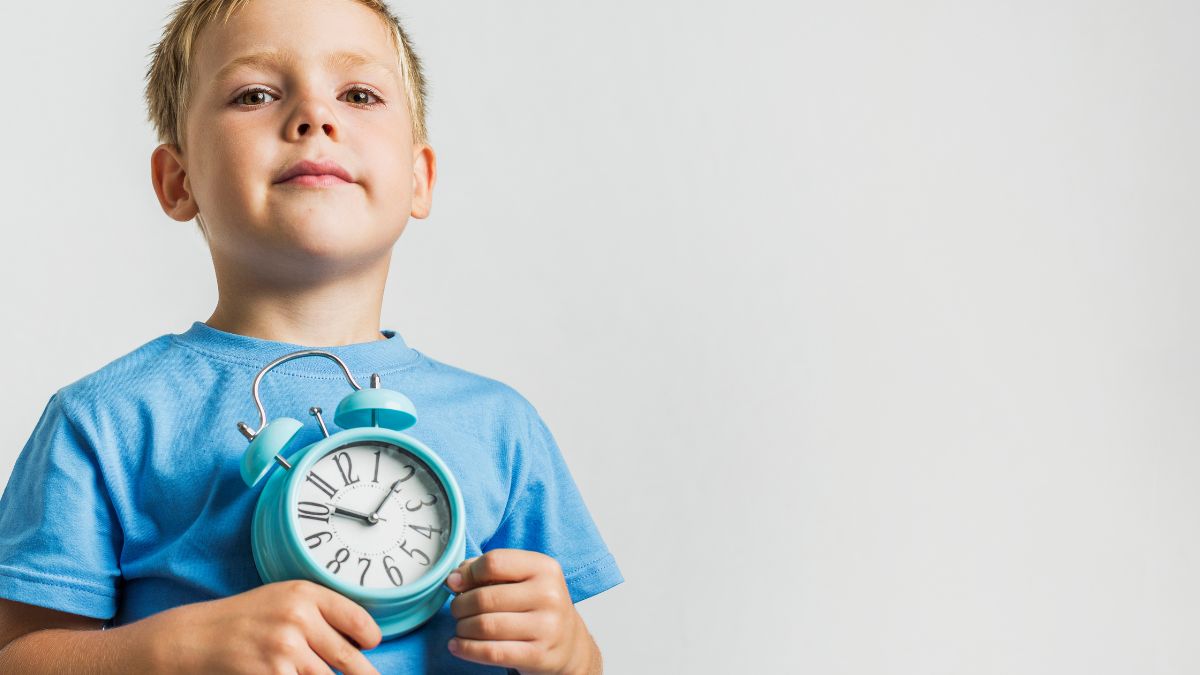Autism Noise Sensitivity

Understanding Noise Sensitivity in Autism
For individuals with autism, noise sensitivity can significantly impact their daily lives and well-being. Understanding the nature of this sensitivity is essential in providing appropriate support and accommodations. In this section, we will delve into sensory hypersensitivity in autism and explore the prevalence of noise sensitivity within the autistic community.

Sensory Hypersensitivity in Autism
Autism is often associated with sensory processing differences. Nearly 90% of autistic individuals experience some form of sensory hypersensitivity (over-responsiveness) or hyposensitivity (under-responsiveness) to various sensory stimuli, including touch, smell, and hearing. Noise sensitivity, specifically, is a common manifestation of sensory hypersensitivity in autism.
Individuals with autism may perceive sounds differently from neurotypical individuals. Common everyday sounds that may be tolerable to most people can be overwhelming and distressing to those with noise sensitivity. This heightened sensitivity can lead to significant distress, anxiety, and even physical discomfort for individuals on the autism spectrum.
Prevalence of Noise Sensitivity
Noise sensitivity is a common feature of autism, with a substantial number of autistic individuals experiencing decreased tolerance for sound at some point in their lives. Studies indicate that noise sensitivity affects approximately 50% to 70% of autistic individuals.
Research conducted within the Simons Simplex Collection autism research project found that approximately 65% of children in the study were sensitive to noise. Moreover, a significant percentage of individuals with autism either ignore or overreact to ordinary sounds, indicating the impact of sensory processing differences [3].
Understanding the prevalence of noise sensitivity in autism highlights the importance of creating environments that are accommodating and supportive for individuals on the spectrum. By recognizing and addressing the challenges posed by noise sensitivity, we can work towards enhancing the overall well-being and quality of life for autistic individuals.
Impact of Noise Sensitivity
Noise sensitivity is a common challenge experienced by individuals with autism. Understanding the impact it has on their daily lives is crucial for providing appropriate support and accommodations. This section explores the behavioral responses to sound and the safety concerns associated with noise sensitivity.
Behavioral Responses to Sound
For individuals with autism, noise sensitivity can trigger a range of behavioral responses. Some individuals may become overwhelmed or distressed by certain sounds, leading to behaviors such as covering their ears, running away, or exhibiting signs of distress. This is often referred to as auditory stimming, which is a self-soothing mechanism used to cope with the overwhelming sensory experience.
The severity of behavioral responses to sound can vary among individuals. While some may exhibit mild discomfort or annoyance, others may experience extreme distress, leading to self-injurious behaviors or attempts to escape from the source of the sound. A study conducted by the National Autism Association (NAA) and the Interactive Autism Network (IAN) found that being over- or under-reactive to noise led to unsafe situations for 43 to 52 percent of children with autism, resulting in accidental injuries or harm to themselves or others [3].
Safety Concerns and Noise Sensitivity
Safety concerns are a significant issue related to noise sensitivity in individuals with autism. The study mentioned earlier reported that children who were over- or under-reactive to noise were more likely to be in unsafe situations. Some children hurt themselves or others, while others experienced accidental injuries due to their noise sensitivities. Approximately 40 percent of noise-sensitive children attempted to run away from sounds that bothered them, and 25 percent tried to hide.
To address these safety concerns, it is essential to create a supportive environment that minimizes exposure to overwhelming sounds and provides strategies to manage noise sensitivity. Parents and caregivers play a crucial role in identifying triggers and implementing appropriate interventions. This may include avoiding trigger sounds, creating calming sensory room ideas for autism, or taking quiet breaks with the individual to provide a respite from noisy environments.
Understanding the impact of noise sensitivity on behavior and safety allows for the development of effective interventions and strategies to support individuals with autism. By providing the necessary accommodations and creating a sensory-friendly environment, we can help minimize the negative impact of noise sensitivity and enhance the overall well-being of individuals with autism.
Managing Noise Sensitivity
When it comes to managing noise sensitivity in autism, there are various strategies and therapies that can help individuals cope with the challenges posed by hypersensitivity to sound. Two effective approaches are cognitive-behavioral therapy (CBT) and practical strategies for noise management.
Cognitive Behavioral Therapy (CBT)
Cognitive-behavioral therapy (CBT) is a widely recommended intervention for addressing phobias and anxiety. It teaches individuals to develop self-management skills and coping mechanisms to deal with emotional challenges [4]. CBT can be particularly beneficial for individuals with autism who experience noise sensitivity.
Through CBT, individuals learn to identify and challenge negative thoughts and beliefs associated with noise sensitivity. They develop strategies to modify their emotional and behavioral responses to sounds, helping them to feel more in control and reduce anxiety levels. CBT can also provide individuals with practical tools to manage their reactions to loud or overwhelming noises.
Practical Strategies for Noise Management
In addition to therapy, there are several practical strategies that can be employed to manage noise sensitivity in autism. These strategies can be adapted to suit individual needs and preferences. Some commonly used techniques include:
- Avoiding Noisy Places: Minimizing exposure to loud and crowded environments can help reduce the impact of noise sensitivity. When possible, choosing quieter settings or visiting noisy places during off-peak hours can provide individuals with a more comfortable experience.
- Designated Quiet Spaces: Creating designated quiet spaces at home, school, or work can serve as a retreat for individuals to escape from overwhelming noise. These spaces can be customized to suit personal preferences, incorporating elements such as soft lighting, comfortable seating, and calming sensory room ideas for autism.
- Earplugs or Noise-Canceling Headphones: Utilizing earplugs or noise-canceling headphones can help reduce the impact of loud or irritating sounds. These devices create a physical barrier that dampens or eliminates noise, providing individuals with a greater sense of comfort and control. It is important to find the right fit and level of noise reduction that works best for each individual.
- Distractions: Employing distractions when triggered by sounds can help shift focus away from noise sensitivity. Engaging in preferred activities, listening to calming music, or using focus-inducing tools, such as fidget toys, can divert attention and provide a sense of relief.
Occupational therapists trained in sensory processing can provide tailored guidance and recommendations for managing noise sensitivity in autistic individuals. They can suggest specific techniques and tools, such as auditory stimming, to support individuals in staying calm and regulated in loud environments.
While therapies like auditory integration training (AIT) have not shown sufficient scientific evidence as effective treatments for noise sensitivities in autism, CBT and practical strategies for noise management offer valuable and evidence-based approaches to help individuals navigate and cope with noise sensitivity [2]. Research suggests that the nervous system of children with autism may respond differently to sound, and understanding and implementing effective management techniques can greatly enhance their quality of life.
Interventions for Noise Sensitivity
When it comes to managing the challenges of noise sensitivity in autism, various interventions can help individuals cope with overwhelming auditory experiences. Two common interventions are the use of noise-canceling headphones and the effectiveness of distractions.
Use of Noise-Canceling Headphones
One effective intervention for individuals with autism who experience noise sensitivity is the use of noise-canceling headphones. These headphones are designed to reduce or eliminate external sounds by producing sound waves that cancel out the incoming noise. By wearing noise-canceling headphones, individuals with autism can create a more calming auditory environment for themselves.
A study conducted in 2018 found that wearing noise-canceling headphones increased the participation of autistic children in their home, community, and school settings. This suggests that noise-canceling headphones can be beneficial and may be recommended by physical and occupational therapists.
Effectiveness of Distractions
Distractions can also be an effective way to manage noise sensitivity in individuals with autism. For example, providing soothing or preferred sounds, such as music or white noise, can help mask or divert attention from the overwhelming noises. Many parents have reported satisfaction with interventions such as earbuds or headphones with music, as well as ear muffs, to help alleviate noise sensitivity in their children with autism [3].
Distractions can serve as a tool to redirect focus and attention away from the triggering noises, providing a sense of relief and reducing anxiety. However, it's important to note that the effectiveness of distractions may vary between individuals, and it may require some trial and error to find the most suitable distraction techniques.
By utilizing interventions like noise-canceling headphones and distractions, individuals with autism can better manage their noise sensitivity and create a more comfortable auditory environment. It's crucial to understand the unique needs of each individual and tailor interventions accordingly to provide them with the support they require. To explore more strategies for managing sensory challenges in autism, you may find our article on calming sensory room ideas for autism helpful.
Sensory Processing in Autism
Understanding the sensory processing differences in individuals with autism is crucial to comprehending the challenges they may face, including noise sensitivity. Autistic individuals may process sensory information differently, often unable to filter out irrelevant sights or sounds, or finding certain sensory inputs severely distracting or uncomfortable [2]. This section will explore the processing differences in sensory information and the autonomic reactions to noises in individuals with autism.
Processing Differences in Sensory Information
Children with autism may exhibit differences in the way they process sensory information. They may struggle to filter out irrelevant noises or sights, leading to sensory overload or heightened sensitivity to certain sensory inputs. This can result in severe discomfort or distraction [3]. Research suggests that the nervous system of children with autism may respond differently to sound, as shown by greater brain activity in certain regions when exposed to sounds, as well as differences in brain wave responses compared to typically developing children.
The processing differences in sensory information can manifest in various ways, including auditory hypersensitivity, where even normal or everyday sounds may be perceived as distressing or overwhelming. This can lead to behavioral responses such as covering ears, crying, or attempting to escape from the sound source. It's important to note that the severity and specific triggers of sensory processing differences can vary among individuals with autism.
Autonomic Reactions to Noises
Research has shown that children with autism may have stronger autonomic reactions to noises compared to typically developing children. Autonomic reactions refer to involuntary responses of the nervous system, such as changes in heart rate or increased sweating. These reactions may be triggered by certain sounds and can contribute to the greater behavioral responses to sound commonly observed in individuals with autism [3].
Additionally, studies have found that children with autism exhibit greater brain activity in certain regions when exposed to annoying sounds, indicating a different reaction to sound processing. These differences in autonomic reactions and brain activity highlight the unique sensory experiences of individuals with autism and contribute to their sensitivity to noise.
It's important to note that while some individuals with autism may experience noise sensitivity, not all individuals on the autism spectrum share this trait. Sensory processing differences can vary widely among individuals with autism, and it's essential to understand and respect their individual sensory needs and preferences.
Further research is ongoing to deepen our understanding of the sensory processing differences in autism and explore effective interventions and therapies to support individuals with autism in managing their sensory sensitivities.
Research on Noise Sensitivity
When it comes to understanding and addressing noise sensitivity in autism, research plays a crucial role in providing insights into the topic. In this section, we will explore some of the key studies conducted on autonomic reactions and the effectiveness of therapies related to noise sensitivity in individuals with autism.
Studies on Autonomic Reactions
A study conducted by the Kennedy Krieger Institute found that children with autism exhibit stronger autonomic reactions compared to typically developing children when exposed to noises, as well as when they are not exposed to any specific auditory stimuli. These stronger physiological responses in individuals with autism may contribute to greater behavioral responses to sound. The study highlights the complex relationship between sensory processing and the physiological reactions associated with noise sensitivity in autism [3].
Effectiveness of Therapies
When it comes to addressing noise sensitivity in autism, various therapies have been explored. However, it is important to note that not all therapies have shown sufficient scientific evidence to support their effectiveness in treating autism-related noise sensitivities. According to the National Autism Center and the American Speech-Language-Hearing Association, therapies such as auditory integration training (AIT) have not demonstrated significant scientific support as effective treatments for noise sensitivities in individuals with autism.
Research on noise sensitivity in autism continues to evolve, and further studies are needed to deepen our understanding of this aspect of sensory processing in individuals with autism. By gaining more insights into autonomic reactions and exploring the effectiveness of therapies, researchers and clinicians can develop better strategies and interventions to help individuals with autism manage and cope with noise sensitivity.
References
Similar articles
Contact us today to learn more.



.jpg)








